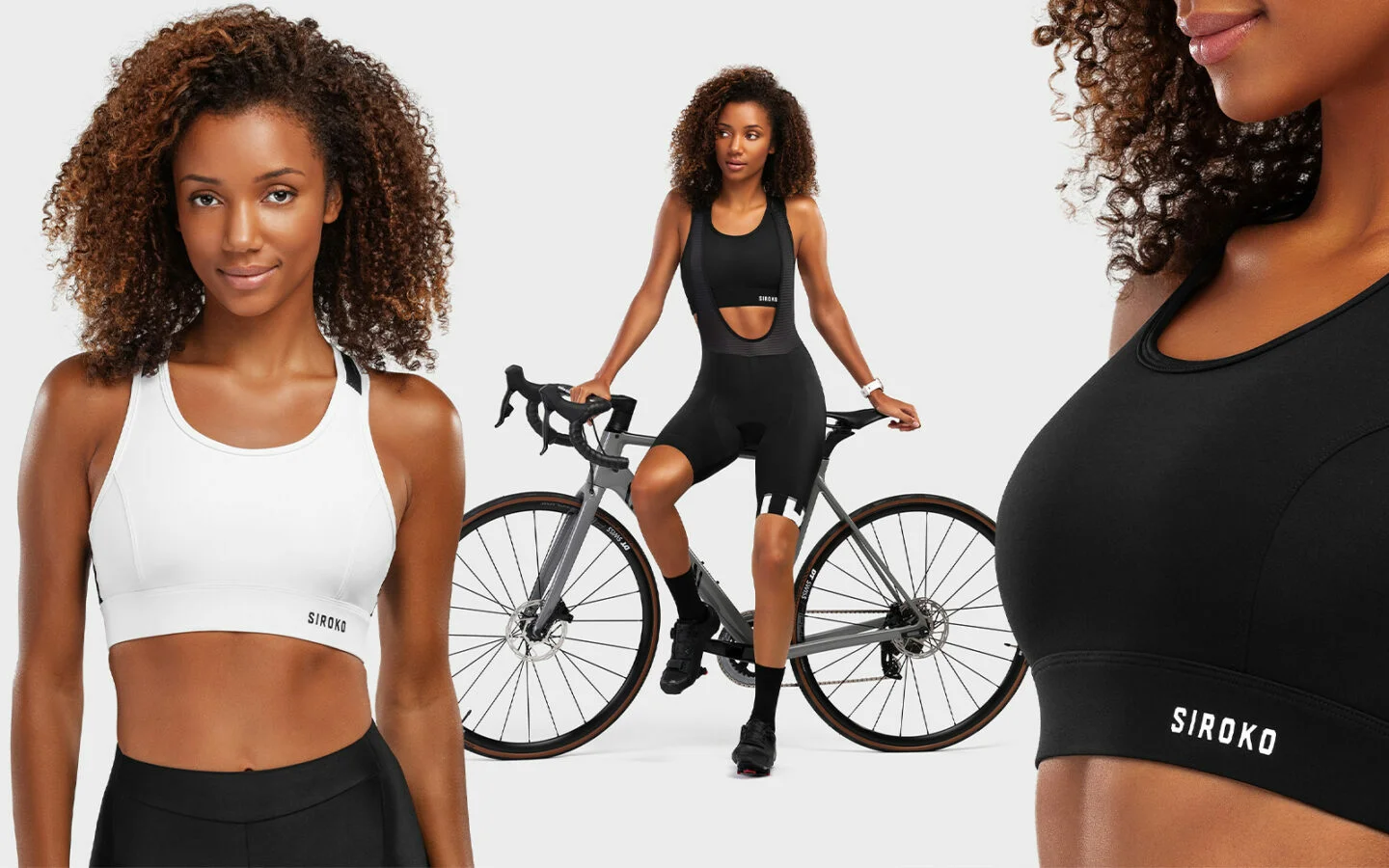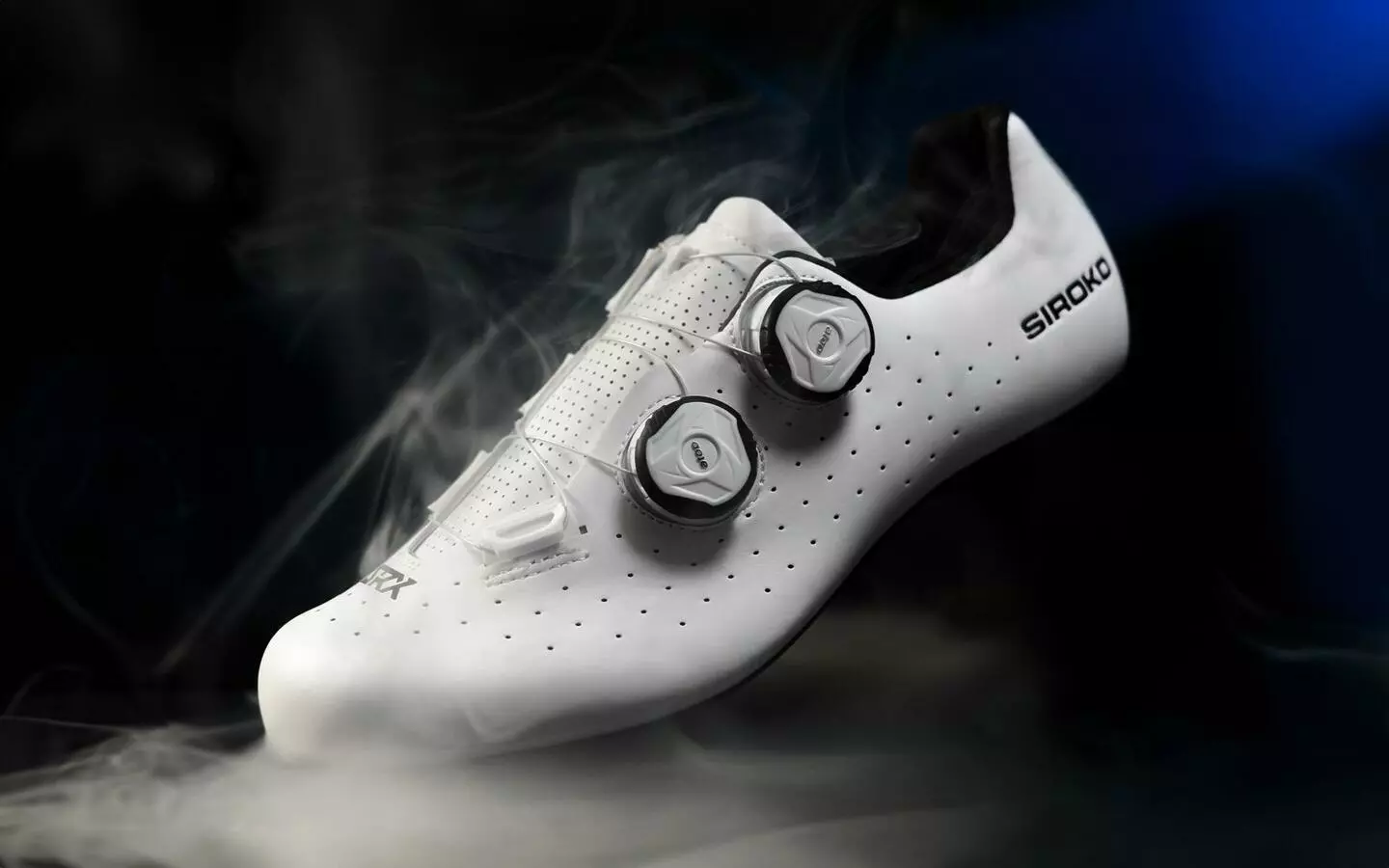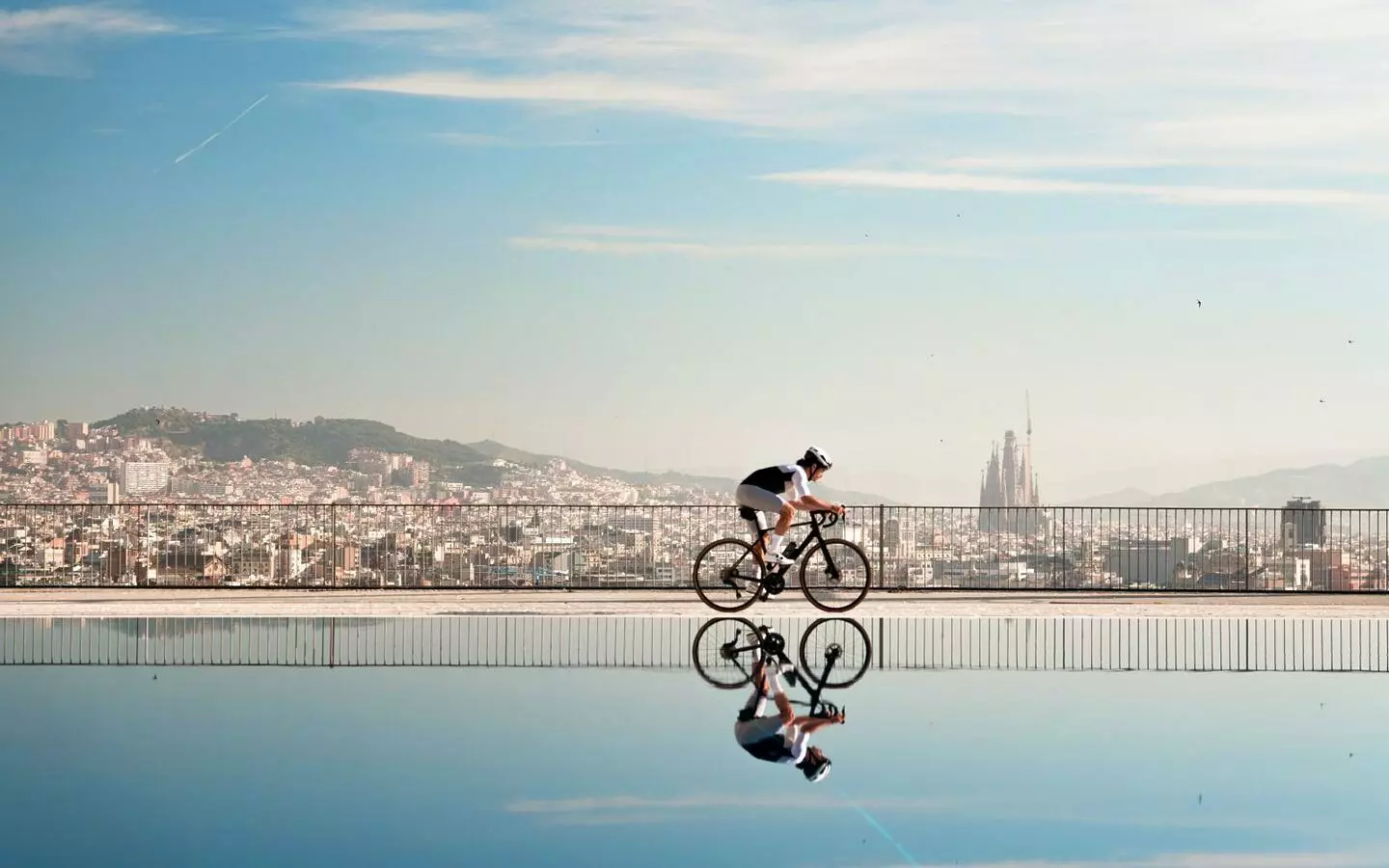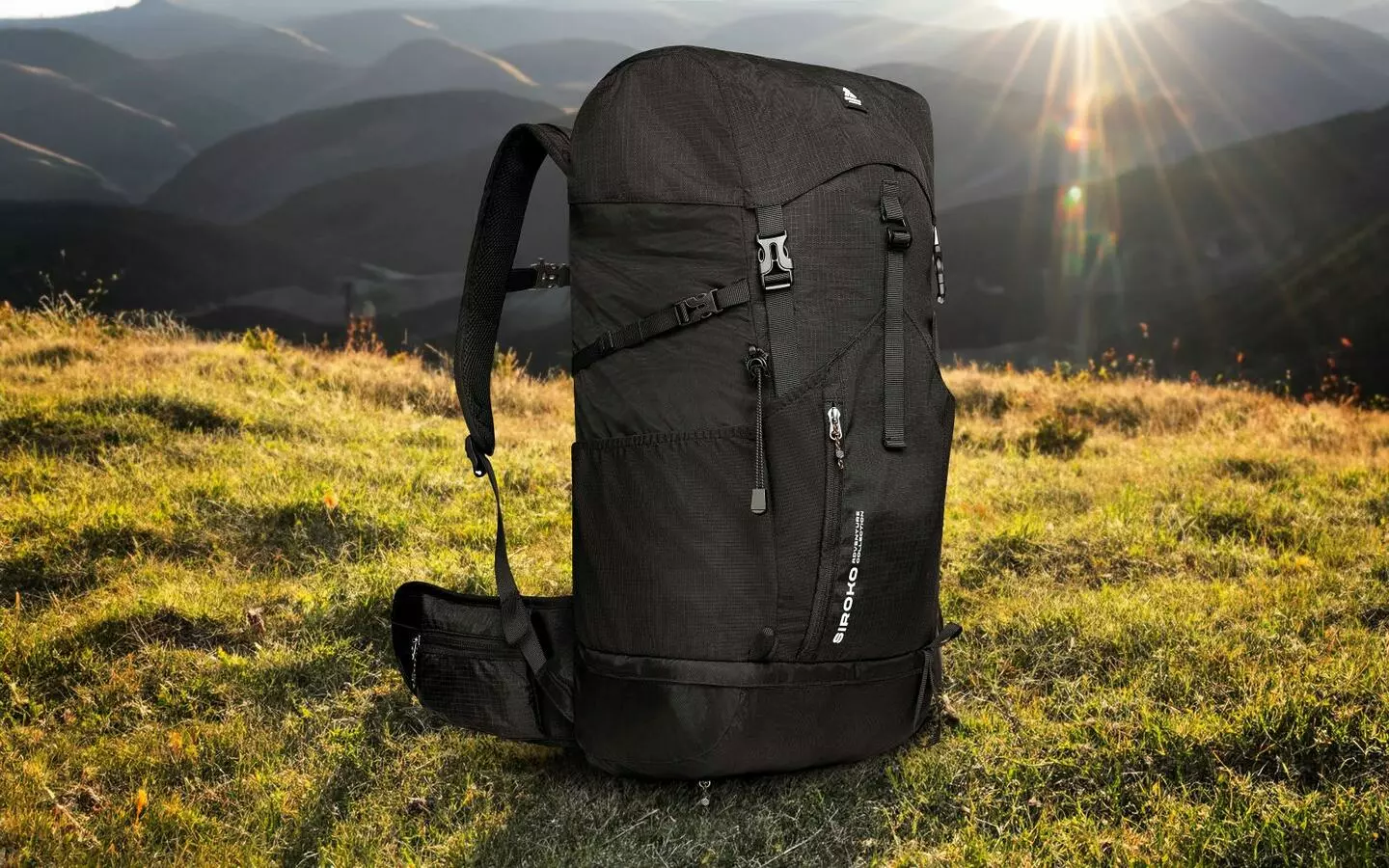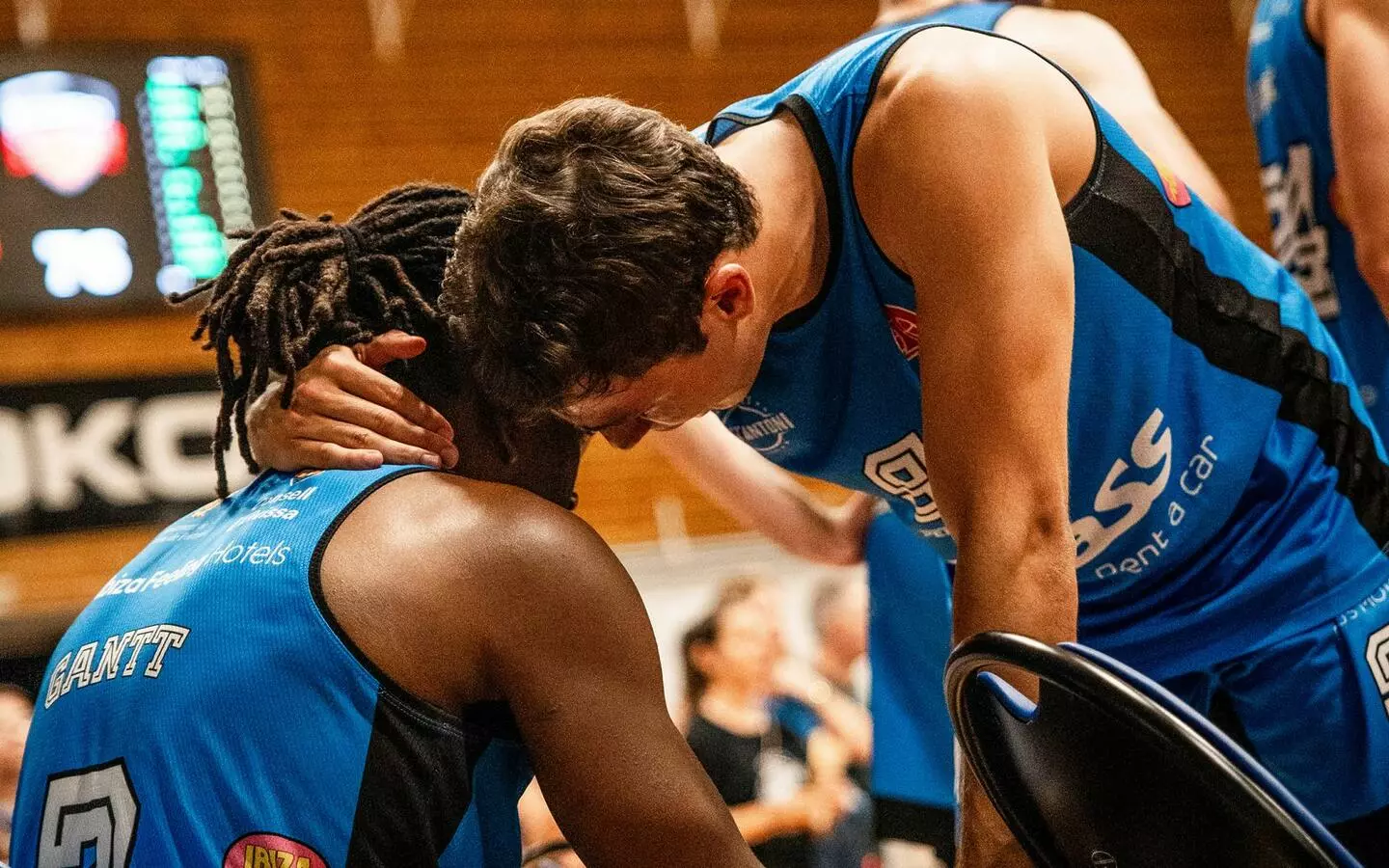Whether you’ve just started cycling or you’re a seasoned cyclist, you probably have questions about clothing, accessories and equipment in general. We have already answered some of them, such as whether or not to wear underwear under your bib shorts. Today we will answer the most frequently asked questions related to bras and cycling. Questions such as: Do I need to wear a bra under the jersey? What kind of sports bras are on the market? Which one is best for cycling? What are the alternatives to sports bras? We will look at the most important factors to consider when buying a sports bra for cycling as well as for other sports. Let’s get started:
Do I really need to wear a bra when riding a bicycle?
It is not necessary, but it is recommended. The decision depends mainly on the size of your chest. Riders with smaller breasts can wear a tight-fitting base layer top under the jersey that provides enough compression and comfort. Many pros use it to prevent nipple chafing, absorb sweat and regulate body temperature by wicking away moisture.
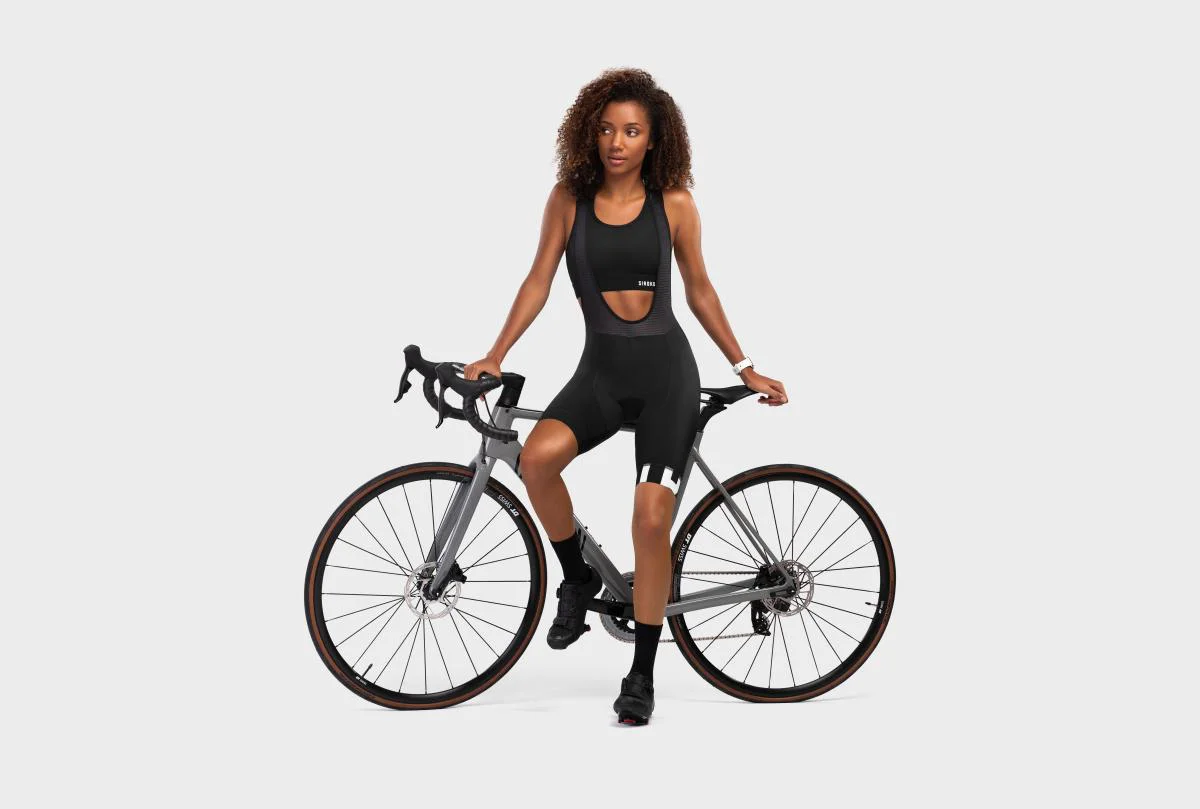
However, the larger the breast size, the more advisable it is to wear a sports bra because it will provide more support than a base layer. It might take some getting used to but it’s beneficial in the long run.
Why wear a bra while cycling?
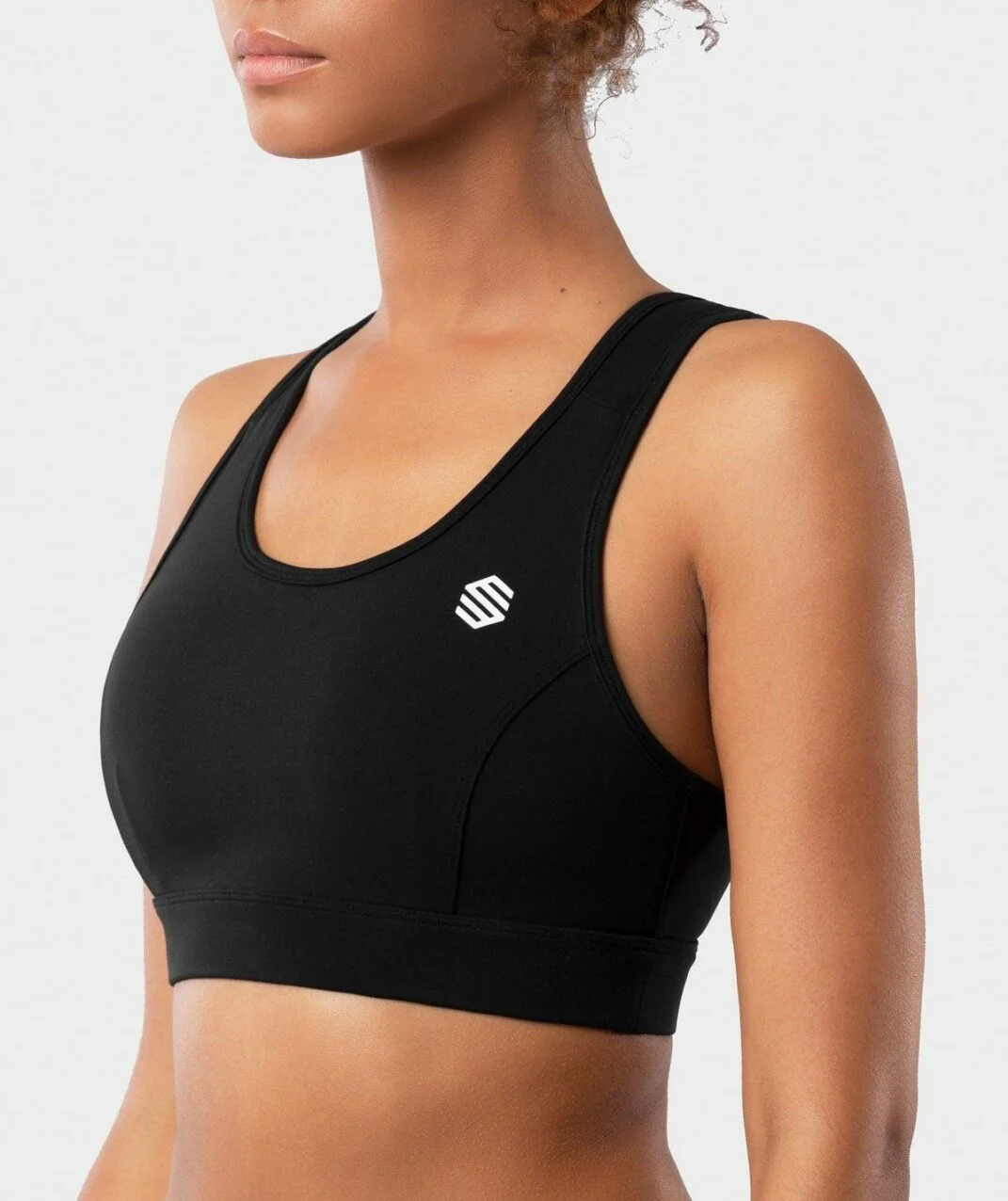
The main reason is the support it offers to the breast, but there are more advantages:
- Preventing pain. Although cycling is a low- to medium-impact sport, many women (especially those with larger breasts) report that the bouncing of the breasts causes pain and discomfort during exercise.
- Reducing fatigue and increasing performance. There is no data on female cyclists, but a University of Portsmouth study on female runners found a 55% reduction in pectoral muscle activity when wearing a proper sports bra. This translates into less fatigue and lower energy consumption.
- Preventing sagging. We spend a lot of time bending forward on the bicycle and there are no muscles in the breasts to prevent sagging. Only the skin and Cooper’s ligaments support the fat, tissue and other elements. These ligaments are not very strong, so the support provided by the sports bra is very advantageous.
- Increased self-confidence and peace of mind. Although it may seem at odds with today’s beauty standards, having large breasts is not always a good thing. Many women refrain from practicing sports because of the movement of their breasts. A sports bra provides that support to be able to move freely and comfortably.
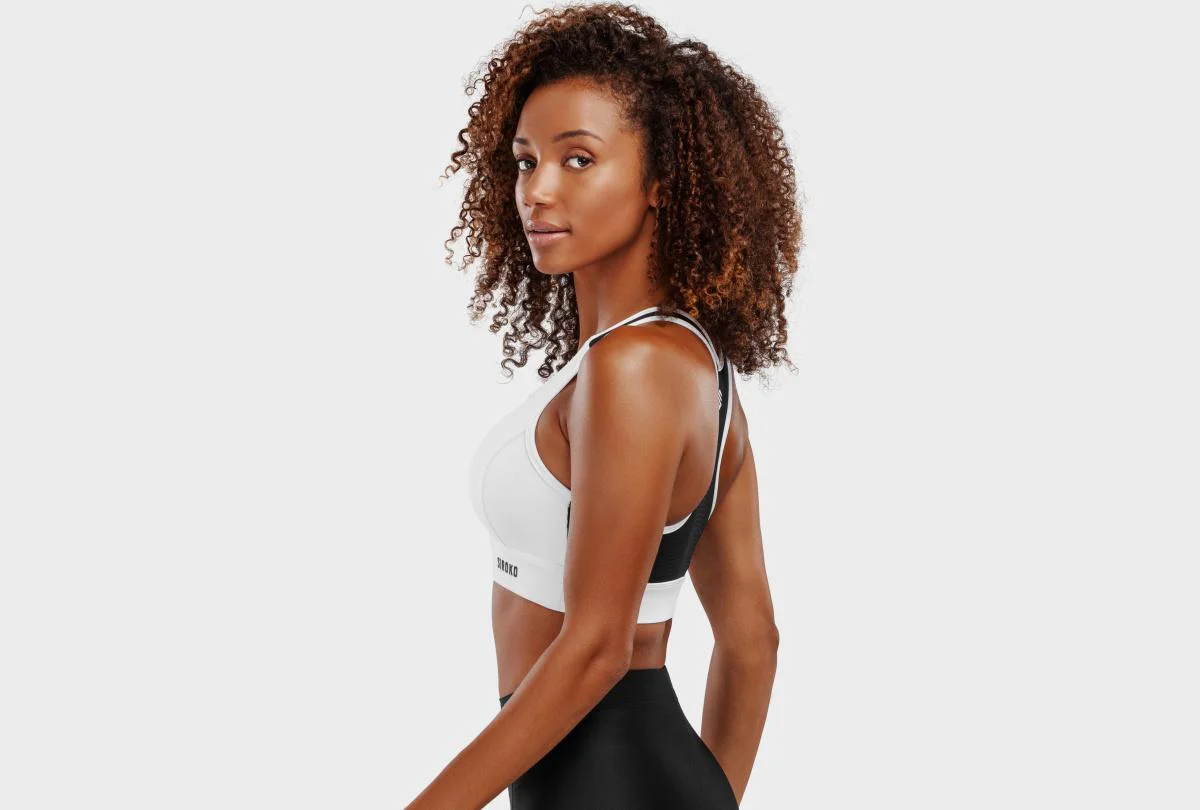
- Absorbing sweat. Women have to deal with sweating between and under the breasts. Places that a base layer does not reach, especially when the breasts are large. The underband of the sports bra traps this sweat and, thanks to the breathable fabric, keeps the skin dry so the body can regulate its temperature.
- Preventing chafing. Especially on the nipples which are really sensitive and delicate.
- Increased comfort and ease of movement. Wide, elastic straps prevent shoulder and back discomfort. Most Siroko sports bras feature a Racerback design with wide arm openings to avoid chafing in the armpits and shoulders and to allow for ease of movement when stretching the arms towards the handlebars or when getting out of the saddle and balancing the body.
- Unzipping the jersey. Here, just as in many other things in life, women’s situation is more complicated than men’s. Men unzip their jerseys going up an ascent and no one stares at them. For women, it’s better to do it with a bra underneath. For your safety and that of other vehicles.
Can I wear a regular bra instead of a sports bra?
Yes, but it is not recommended, especially if you regularly ride a bike. A normal bra is not designed for sports. It does not provide enough support, the straps are narrow, the fabric is not as breathable (especially if it is cotton) and the metal/plastic elements can cause discomfort. A cycling-specific sports bra is a much better choice in terms of comfort and performance.
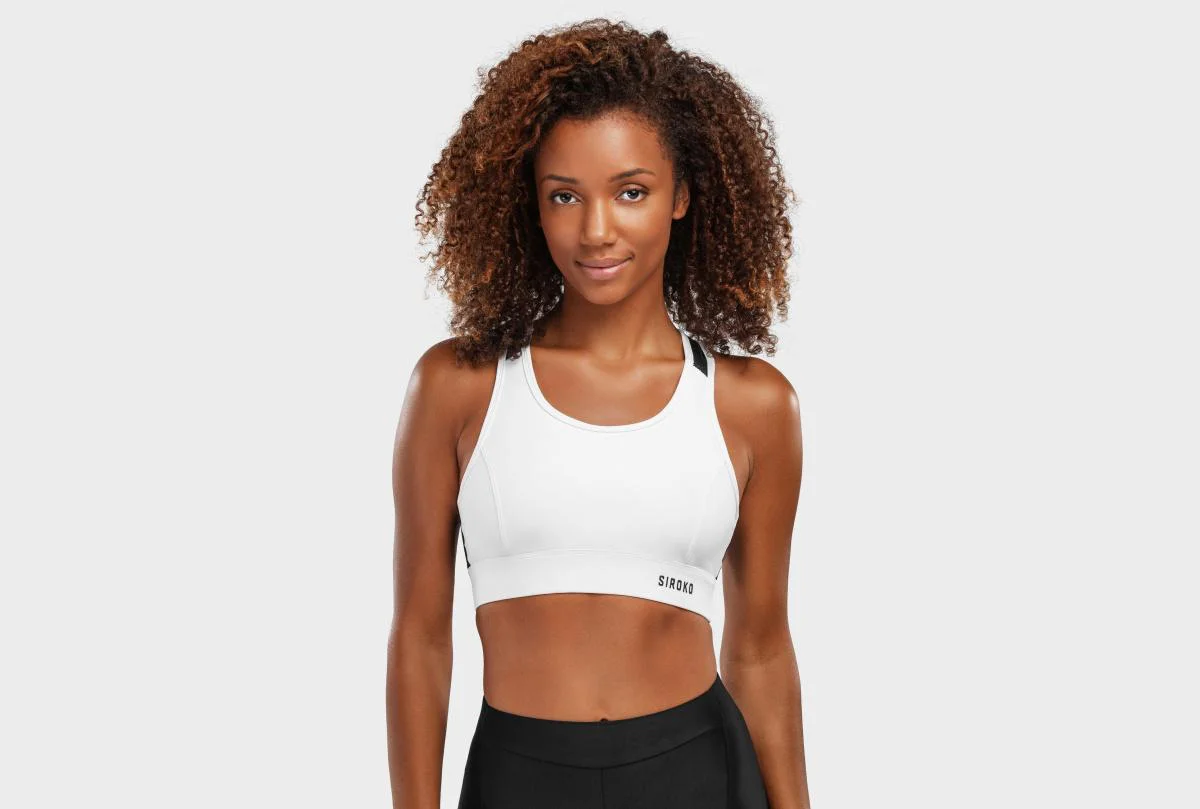
What types of sports bras are there and which one is best for cycling?
First of all, there is no such thing as one perfect sports bra for cycling. There is a great variety of models and each woman should find the one that best suits her needs. Even the same woman can wear different types in the same month (due to breast swelling and tenderness before period) or throughout her life. Over the years, breasts generally increase as a result of fat accumulation, but in the case of cyclists, especially the pros and those who ride a lot, fat loss also might occur in the chest area and decrease breast size.
That being said, the three most common types of sports bras are as follows:
- Compression bras. “Compressing” the breast against the chest to limit their movement. They do not feature individual cups to separate the breasts.
- Encapsulation bras. Featuring cups that surround and support each breast separately.
- Compression and encapsulation bras. The first layer includes separate cups for each breast and the outer layer has a compression cup.
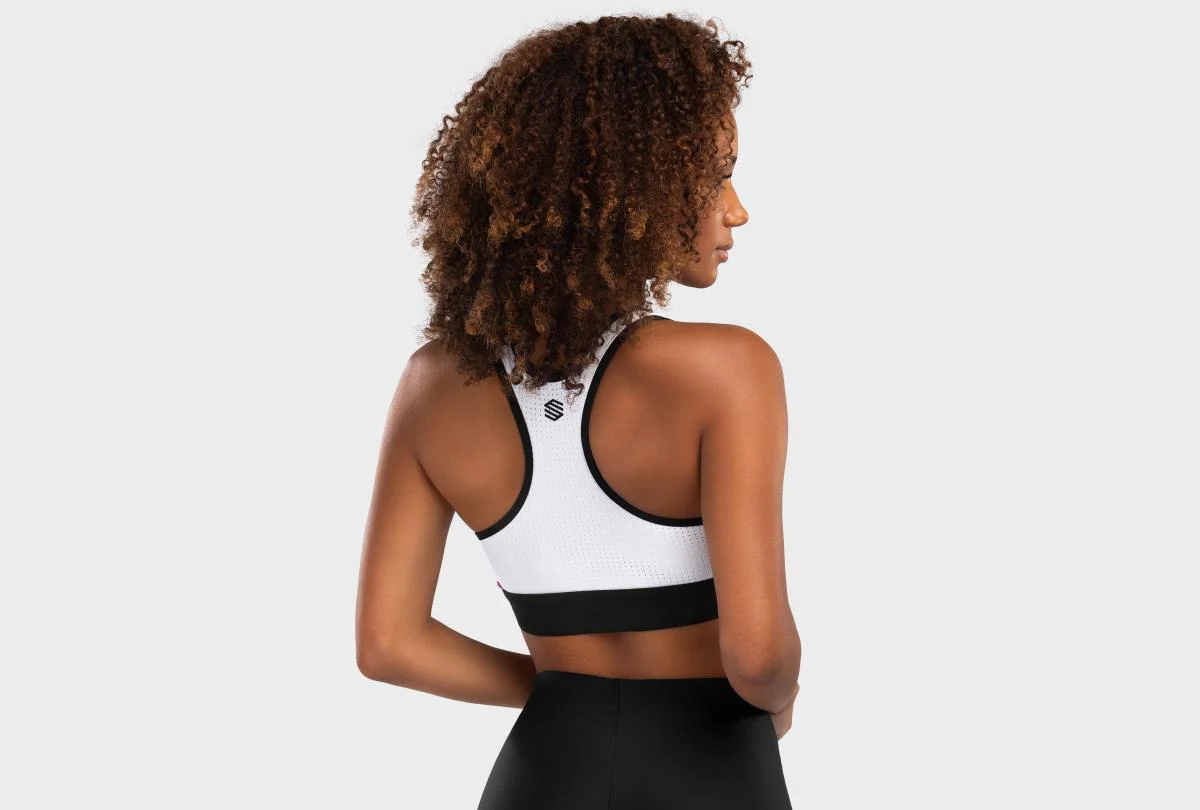
Within each type, there are different models with varying characteristics. The most important ones to take into account are:
- Support level. The greater the support, the greater the compression and the lesser the breast bounce. There are bras for low-, medium- and high-impact sports. Road cycling is considered a low-medium impact activity. MTB is medium-high (depending on the discipline). Generally, the bigger the chest, the bigger the support should be and vice versa. But, as we have already mentioned, there is no one ideal bra model, it is a very personal question.
- Sizing. Sports bras sizes usually range from XS to XL so remember to always take your measurements before buying online. To find out if the bra is your size and holds your breasts properly, do a few jumps in front of the mirror to see if it reduces breast movement or not. Another way is to insert two fingers between the underband and your skin. If you feel pressure, it is too small. If they go in very easily, it may be too large and not hold the breast properly. The same rule applies to the straps in the shoulder area. Make sure your breasts do not spill out; if they do, you need a larger size.
- Underwires. They are not common, but some sports models add them to provide greater support. They are not recommended for cycling.
- Removable pads. They are used mostly for aesthetic reasons as well as to provide more support, but they also generate more heat and sweating. They are not recommended for cycling either.
- Shoulder straps. To avoid chafing, rubbing and leaving marks on the skin while cycling, they should be wide and correctly adjusted before every ride. There are different styles of straps. The traditional and Racerback designs are the most common options with endless variations.
- Fabric. Synthetic fibers (nylon, elastane, polyester) are the most commonly used because of their elasticity, high breathability and quick drying properties. Some models also contain merino wool. Cotton is not a suitable material for sports.
- Seams. The fewer the better. Especially at the areas of greatest pressure and motion.
Alternatives to sports bras for cycling
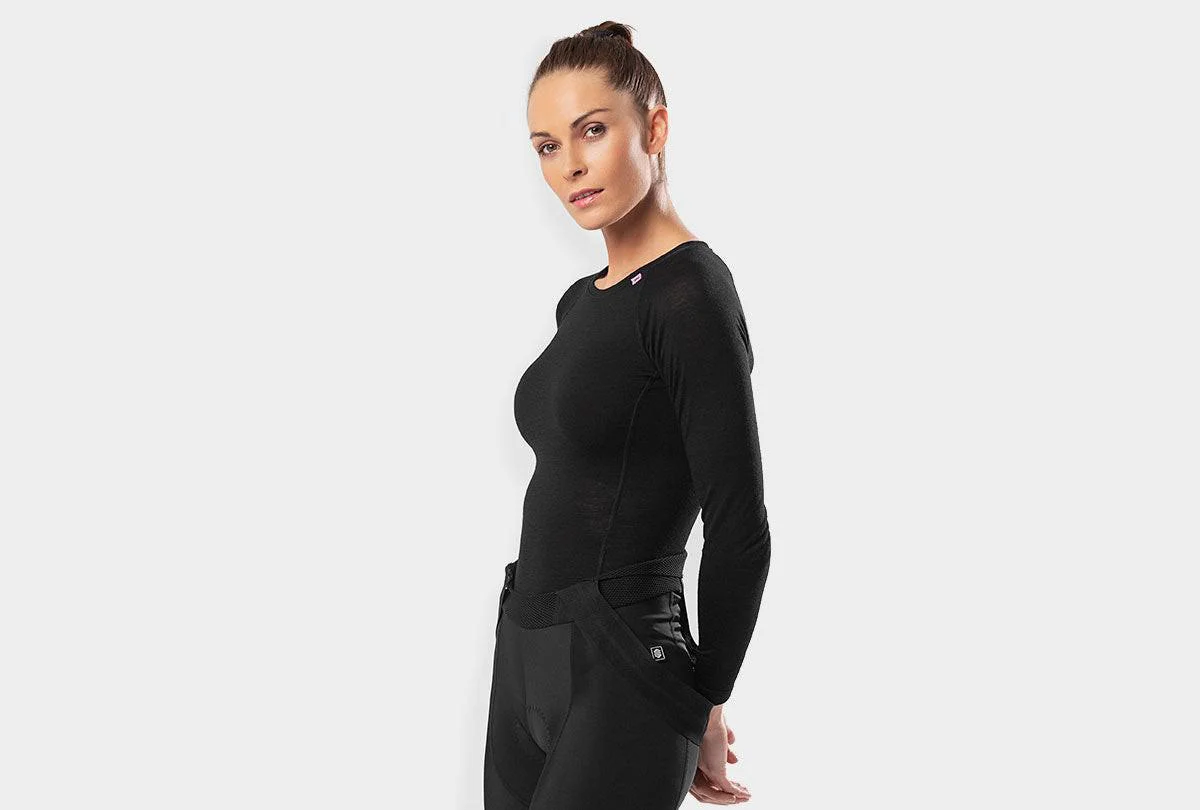
If for some reason (respiratory problems, allergy, use of chest strap heart rate monitor) you can’t or don’t want to wear a sports bra, here are other options that can offer the necessary support:
- Base layer tops. As we mentioned before, many cyclists get enough support from a tight-fitting base layer top.
- High cut bib shorts. There aren’t many models on the market, but it is certainly an option worth considering as it can be worn with or without a jersey.
- Aerosuits. It is a very tight-fitting, one-piece bib shorts and jersey set. It is still recommended to use a base layer top under aerosuits because if it is cold or wet, the nipples will most likely show through.
- Tank tops and crop tops. As long as they are tight-fitting and made of sweat-absorbing and breathable fibers, they are a good alternative to sport-specific garments. It’s best if they meet some of the characteristics mentioned above.
In short, although sports bras are not necessary for cycling and there are alternatives, it is still a good idea to wear one. There are so many models available on the market women with all cup sizes can find a bra with the right support to protect and hold their breasts firmly. We hope you found our guide useful and, if you have any additional questions, feel free to comment below and we will be happy to give you some extra support.
